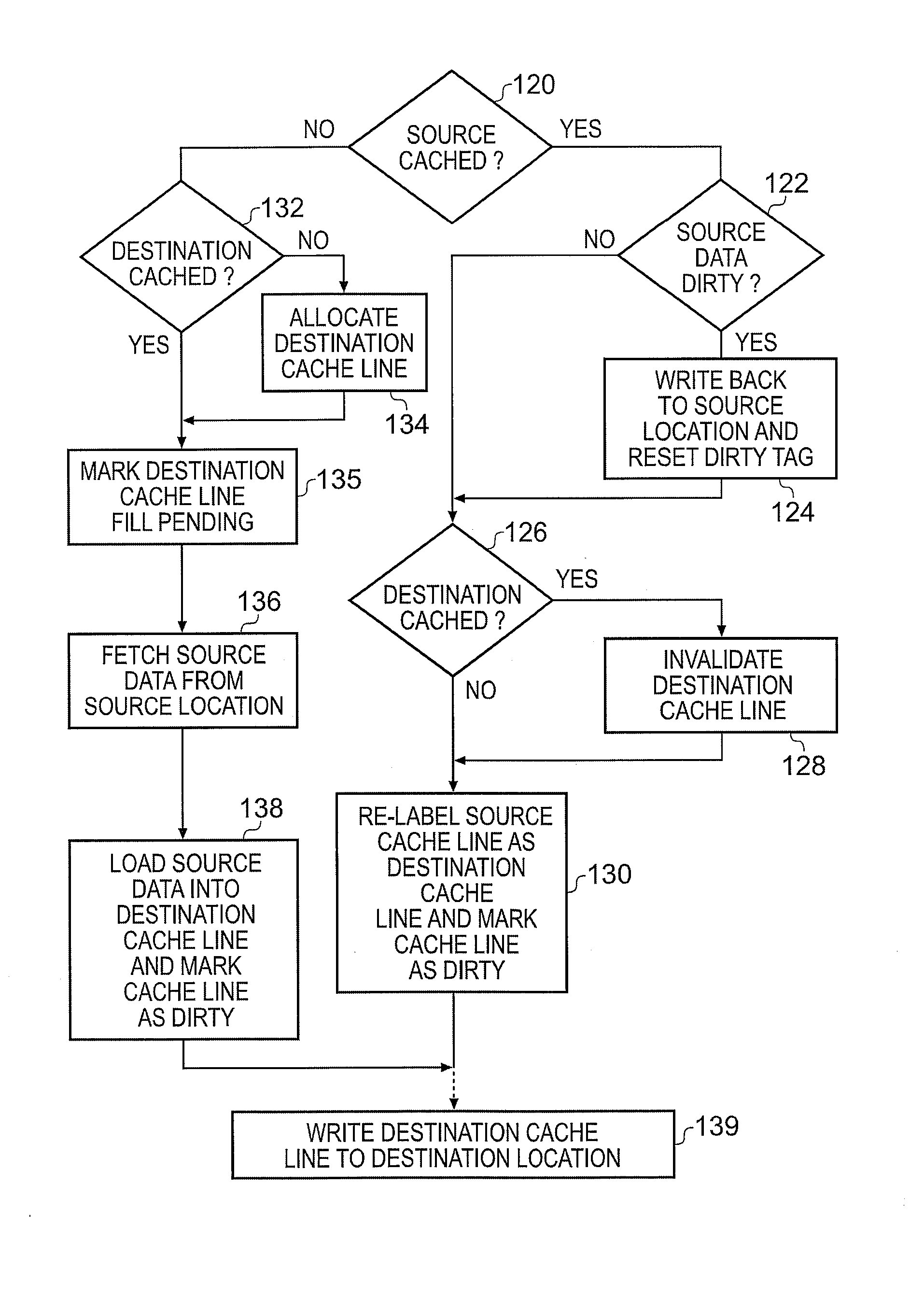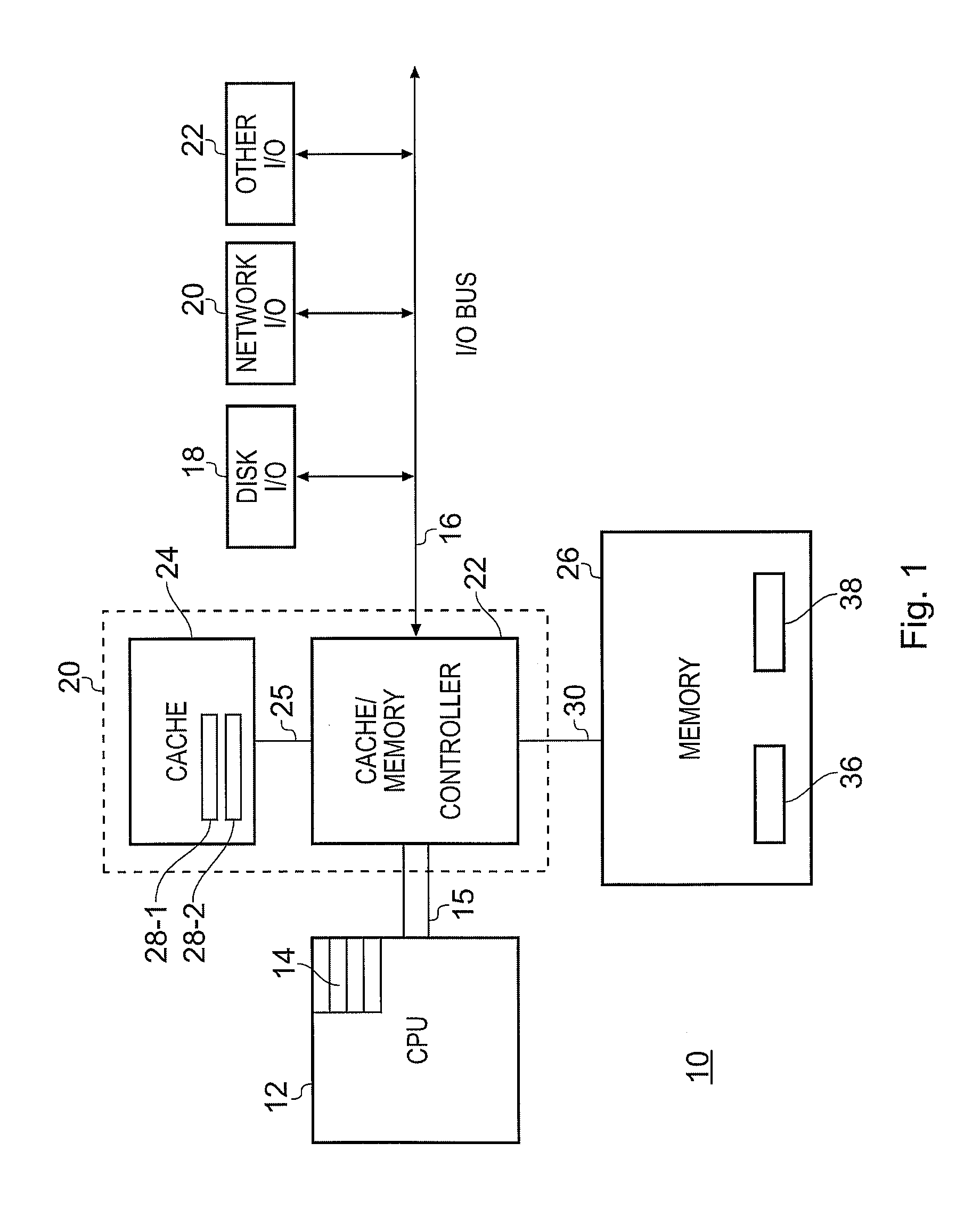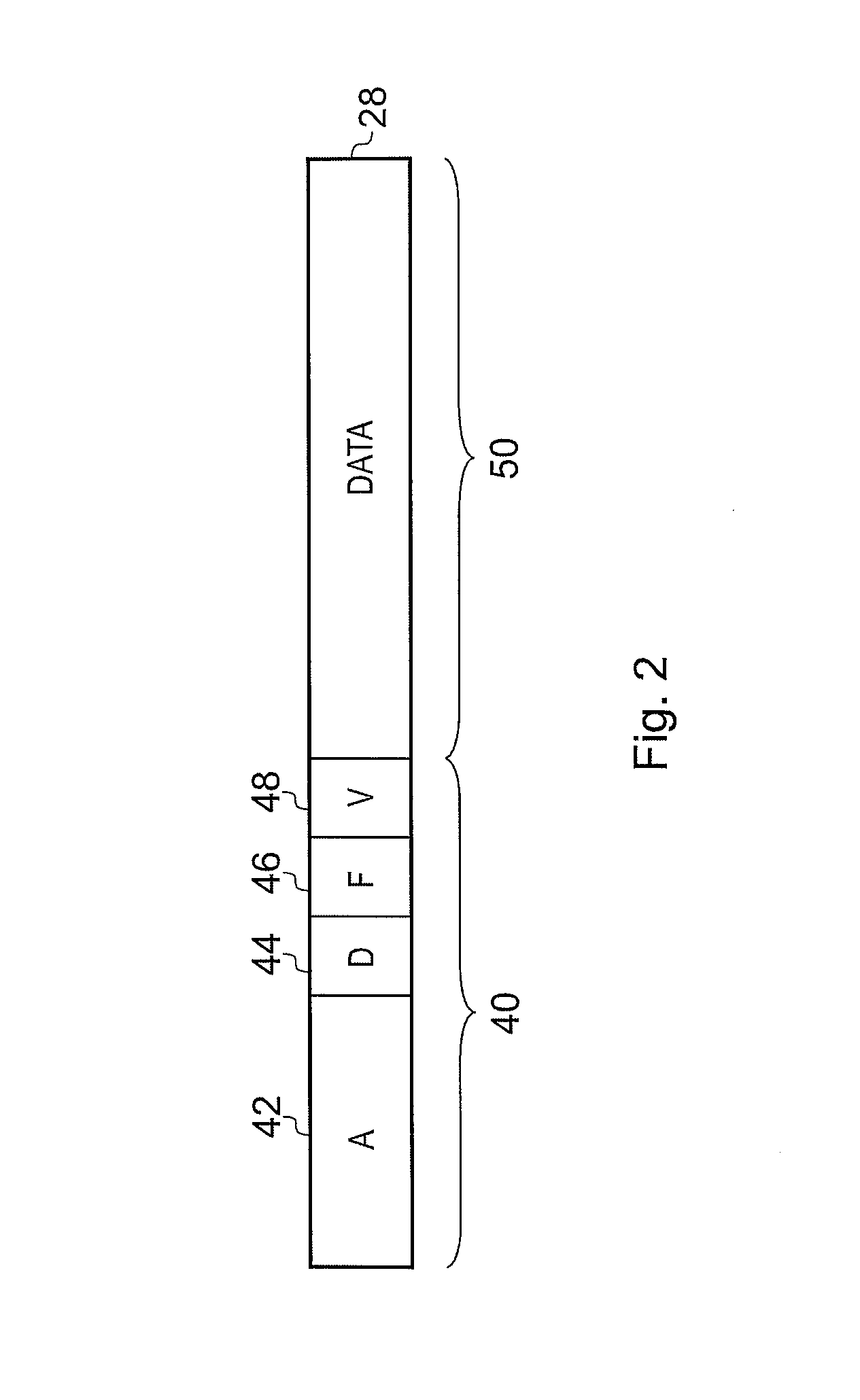Virtual copy system and method
a copy system and virtual copy technology, applied in the field of virtual copy systems, can solve the problems of difficult to use prefetching to advantage, no one of these approaches is truly satisfactory, and the memory of caches is relatively expensive, so as to reduce or even eliminate the use of critical cpu resources, eliminate the start-up cost, and efficient and convenient data copying
- Summary
- Abstract
- Description
- Claims
- Application Information
AI Technical Summary
Benefits of technology
Problems solved by technology
Method used
Image
Examples
Embodiment Construction
[0030]FIG. 1 is a schematic block diagram of elements of a computer system of an embodiment of the present invention.
[0031]FIG. 1 illustrates a computer system 10 that includes a processing unit (here central processing unit or CPU) 12. The processing unit can include a plurality of registers 14. The processing unit is connected via processor bus 15 to a cache subsystem 20 for caching data for use by the processing unit. The cache subsystem 20 can include a cache controller (here a cache / memory controller) 22 and a cache memory 24, for example a cache memory typically described as a second level cache. The processing unit can also include a first level cache (not shown). The cache subsystem 20 is connected via an I / O bus 16 to various I / O subsystems, such as, for example, disk I / O 18, network I / O 20 and other I / O 22 subsystems. In the illustrated example, main memory 26 is connected to the cache subsystem via a memory bus 30.
[0032]It will be appreciated that FIG. 1 provides a simpli...
PUM
 Login to View More
Login to View More Abstract
Description
Claims
Application Information
 Login to View More
Login to View More - R&D
- Intellectual Property
- Life Sciences
- Materials
- Tech Scout
- Unparalleled Data Quality
- Higher Quality Content
- 60% Fewer Hallucinations
Browse by: Latest US Patents, China's latest patents, Technical Efficacy Thesaurus, Application Domain, Technology Topic, Popular Technical Reports.
© 2025 PatSnap. All rights reserved.Legal|Privacy policy|Modern Slavery Act Transparency Statement|Sitemap|About US| Contact US: help@patsnap.com



